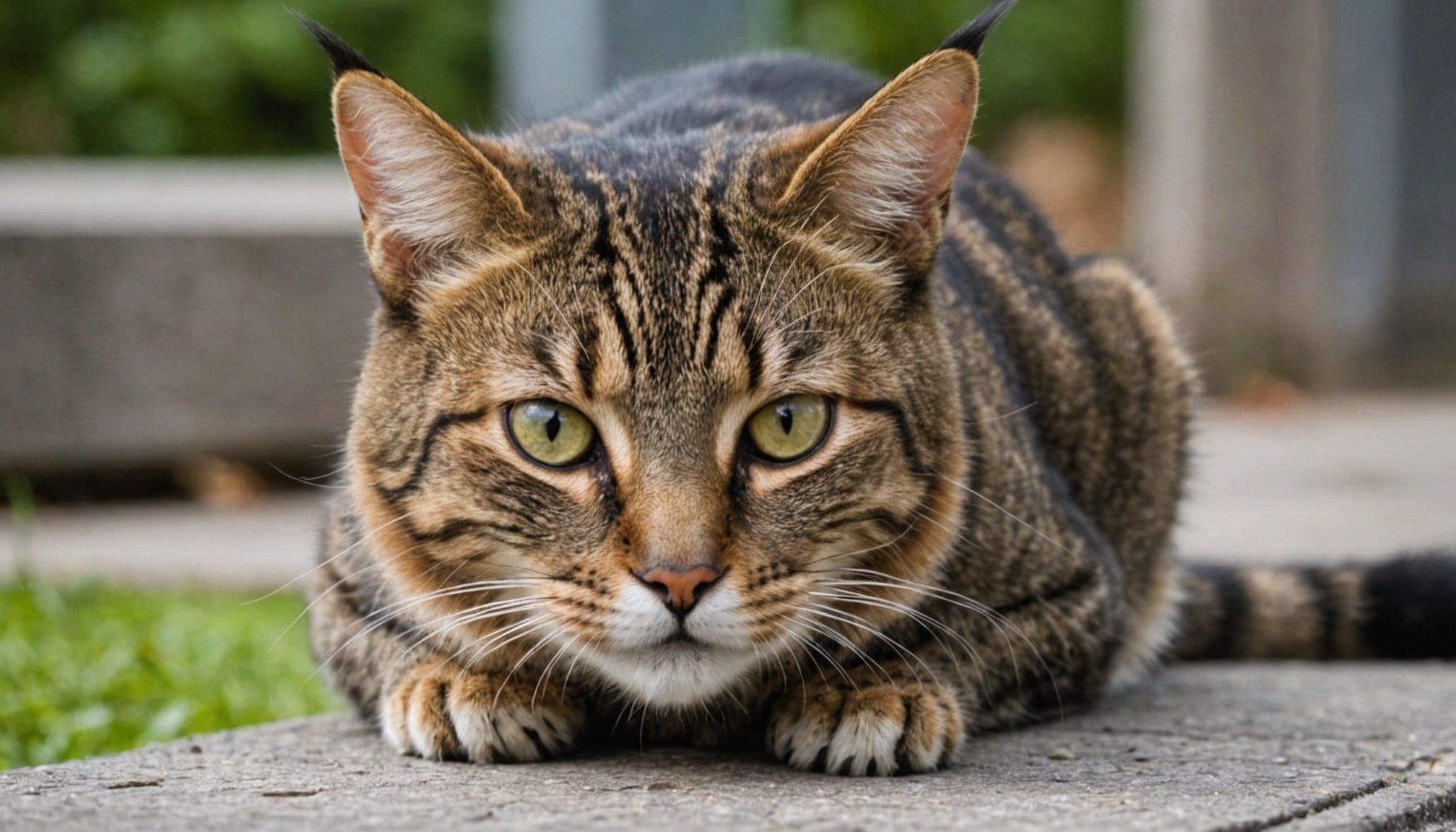Feline aggression can be perplexing and alarming, especially for those who share their lives with cats. Whether your feline companion is displaying aggression towards you, family members, or other animals, it is crucial to recognize the signs and understand the underlying causes. In this article, we will explore the various types of feline aggression, their triggers, and effective strategies for managing such behavior. By fostering a better understanding of your cat’s actions, you can create a safer environment for both pets and people.
Types of Feline Aggression
To effectively manage feline aggression, it is essential to identify the different types. Cats can exhibit several forms of aggression, each stemming from distinct causes. Understanding these categories will empower you to respond appropriately.
Also to discover : What are the best practices for cleaning and maintaining a litter box to keep my cat healthy?
-
Fear Aggression: This type occurs when a cat feels threatened or cornered. Signs include hissing, growling, flattened ears, and a puffed-up tail. Fearful cats may lash out defensively, viewing aggression as their only means of escape.
-
Redirected Aggression: This happens when a cat can’t reach the source of its agitation—like spotting another cat outside—and takes it out on a nearby person or pet. You will notice sudden, unprovoked attacks in this scenario.
Also read : How can I maintain my cat’s mental health as they age?
-
Play Aggression: Kittens and younger cats often exhibit play aggression, which mimics hunting behaviors. They may pounce, bite, or scratch during playtime. While this can seem harmless, it’s essential to redirect this behavior to prevent injuries.
-
Territorial Aggression: Cats are naturally territorial animals. When they feel their space is invaded—whether by a new pet or even a person—they might respond with aggression. This can manifest as vocalizations, posturing, or even physical attacks.
By understanding these types of aggression, you can better assess your cat’s behavior and apply suitable interventions. Recognizing the specific type of aggression allows you to tailor your approach, ensuring a more constructive outcome.
Recognizing the Signs of Aggression
Being able to recognize the signs of aggression in cats is vital for preventing incidents and ensuring everyone’s safety. Cats communicate through a range of body language and vocalizations that can indicate their emotional state.
Body Language: Pay attention to your cat’s posture. A cat that is sitting upright with its ears pointed forward is typically relaxed. In contrast, if the ears are flattened against their head and the body is tense, they might be feeling threatened. A puffed-up tail is a clear sign of aggression or fear, indicating that your cat is trying to appear larger and more intimidating.
Vocalizations: Aggressive vocalizations include hissing, growling, and yowling. These sounds serve as warnings that your cat is feeling uneasy. If your cat suddenly becomes vocal in response to a person or another animal, take heed and give them space.
Behavioral Changes: Sudden changes in behavior can also signal aggression. If a normally friendly cat begins to hide, avoid interaction, or exhibit aggressive responses, it may be time to investigate the underlying causes. Changes in routine, environment, or health issues can all trigger aggressive behavior.
Understanding these signs enables you to act swiftly and appropriately, mitigating potential conflicts. Your response can make a significant difference in managing your cat’s aggressive behavior and ensuring a harmonious living environment.
Causes of Feline Aggression
Understanding the underlying causes of feline aggression is key to effectively addressing the behavior. Various factors can contribute to a cat’s aggressive tendencies, and recognizing these influences is crucial for your intervention.
Stress and Anxiety: Cats are sensitive creatures that thrive on routine and stability. Any disruption—such as moving to a new home, the arrival of a new pet, or changes in family dynamics—can lead to stress. This stress can manifest as aggression, as the cat reacts to its perceived threats.
Medical Issues: Sometimes, aggression can be linked to health problems. Painful conditions such as arthritis or dental disease can cause a normally docile cat to behave aggressively. Regular veterinary check-ups are essential to rule out any underlying medical issues contributing to aggression.
Lack of Socialization: Cats that have not been properly socialized during their formative weeks may develop aggressive tendencies. They might not know how to interact appropriately with people or other animals. Ensuring that kittens are exposed to various environments and interactions during their early development can help prevent these issues.
Territoriality: As previously mentioned, cats are territorial by nature. If they feel their territory is encroached upon, they may respond aggressively. Understanding what triggers this territorial behavior will help you manage your cat’s environment more effectively.
By identifying potential causes of aggression, you can create strategies to alleviate the factors contributing to your cat’s behavior. Each case is unique, and taking the time to understand your cat’s specific situation is vital.
Effective Strategies for Managing Aggression
Once you have identified the type, signs, and causes of aggression in your cat, it is time to implement effective management strategies. These approaches aim to reduce aggression and promote harmony in your household.
Create a Safe Space: Providing your cat with a secure area where they can retreat when feeling stressed is essential. This space should be quiet and equipped with their favorite bed, toys, and litter box. A safe haven will help your cat feel more secure and less prone to aggressive outbursts.
Use Positive Reinforcement: Rewarding calm behavior with treats or affection encourages your cat to associate positive experiences with previously triggering situations. For instance, if your cat remains calm while a new person visits, reward them. This method promotes better behavior over time.
Behavioral Training: Teaching your cat alternative behaviors can redirect their aggression. For instance, if your cat plays aggressively, provide them with toys that allow for safe outlets, such as feather wands or laser pointers. Incorporate training sessions to reinforce these positive actions.
Consult a Professional: If you find yourself struggling to manage your cat’s aggression, do not hesitate to seek the help of a professional animal behaviorist or veterinarian. These experts can offer tailored advice and strategies specific to your cat’s needs.
By implementing these strategies, you can effectively manage and reduce aggressive behavior in your cat. It may take time and patience, but with consistent effort, you can foster a more peaceful coexistence.
Recognizing and dealing with feline aggression is a critical aspect of responsible pet ownership. By understanding the types of aggression, recognizing signs, identifying causes, and implementing effective management strategies, you can create a safer environment for both your cat and those around them. Remember, your cat’s behavior is often a reflection of their emotional well-being. Providing love, patience, and understanding can significantly influence their behavior positively.
As you navigate this journey, continue to educate yourself about feline behavior. The more you know, the better equipped you will be to respond to your cat’s needs. With dedication and care, you can help your cat thrive and foster a harmonious home.











